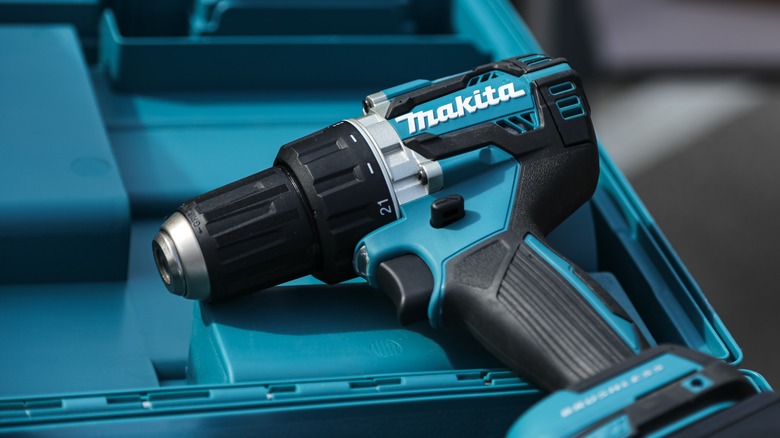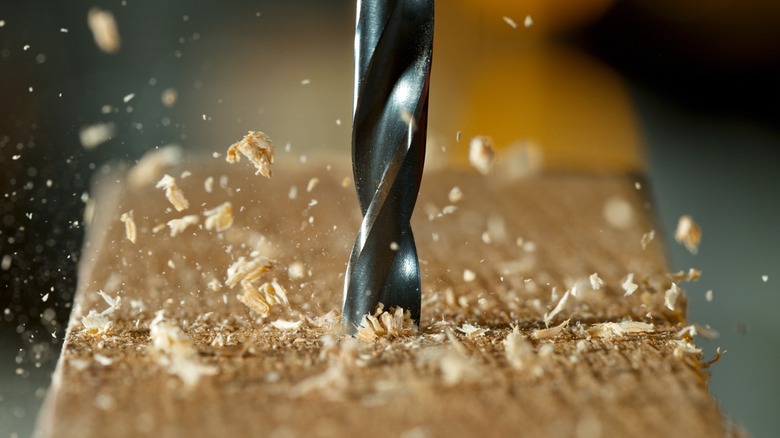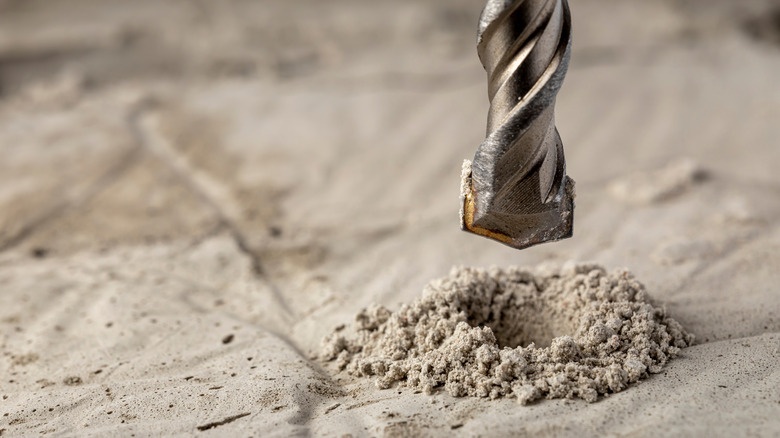
Zigmar Stein/Shutterstock
So, you’ve just purchased a shiny new Makita-branded drill from your local hardware store. With the power of this spinning wonder, you can drill all kinds of holes for fasteners of all shapes and sizes. You can drill holes into your new wall-mounted picture frame, wall studs for running wires, or doors for mounting new deadbolts.
However, before you get too excited, there’s something important you need to remember: the drill is only half of the equation. Before you can actually do any drilling, you need to have the right drill bits on standby. There are a myriad of drill bits necessary for different devices, hole sizes, and materials, and if you use the wrong one, you could potentially damage both your drill and the surface you’re drilling, not to mention hurt yourself. In the name of safety and clean work, let’s briefly cover what kinds of bits are for different kinds of jobs.
Drill driver versus impact driver
First and foremost, before buying a set of drill bits, you need to double-check the device you’ve got in your hand. Did you purchase a drill driver or an impact driver? A drill driver just drills holes and spins fasteners into place as you’d expect, but an impact driver also pounds on bits as it spins in order to drive them in faster and more forcefully.
There are drill bits available for both kinds of drivers, differentiated by the materials that make them up. Impact driver bits are made of tougher materials with reinforced shanks designed to withstand both the spinning and pounding forces from the device. It’s okay to use bits meant for an impact driver on a drill driver, but if you try to use drill driver bits on an impact driver, they may not be able to handle the additional force. Worst case scenario, they could shatter mid-drilling.
Drill bits for different sizes
Lukas Gojda/Shutterstock
When you’re drilling a pilot hole into any kind of surface, the standard rule of thumb is to make a hole that’s slightly smaller than the fastener you’re planning on putting in it. This is so the hole holds tight around the fastener and doesn’t come loose. To make a smaller hole, you naturally want a drill bit slightly smaller than the fastener. For example, if you’re planning on using a 3.5mm screw, you’ll want a drill bit with a slightly smaller diameter, around 0.5mm less than the screw.
If you’re planning on making large holes in a surface for putting physical objects through (wires, bolts, etc.), you’re going to need some specialized bits. Spade bits, for example, are good for making slightly larger holes quickly, and their sizes can be quickly identified by the inch markers usually stamped on the side. If you’re making a really big hole, you’d need a full-on hole saw, which you would probably need to buy separately from a standard drill bit set.
Drill bits for different materials
false/Shutterstock
The last piece of the puzzle is what you’re actually planning on drilling into. Broadly speaking, drill bits fall into three different material-based categories: wood, metal, and masonry. Wood-drilling bits are the most common kind and typically possess a noticeably pointier tip for keeping you centered, as well as wider drill grooves for funneling out sawdust. These bits are typically made of ordinary steel, though you can also opt for high-speed steel for better performance.
Metal-drilling bits tend to have a slightly flatter tip, and while this isn’t absolute, they may be visibly darker in color than wood-drilling screws. This is because metal-drilling bits are made of heat and friction-resistant materials like titanium or black oxide, which can resist the sustained high-friction effort that comes with trying to drill through metal.
Finally, masonry-drilling bits, for working with materials like brick and cement, often have a distinctive protruding head on the tip. This protruding head is made of a super-sturdy material like carbide or tungsten-carbide, which is necessary to pierce such dense materials.
>>> Read full article>>>
Copyright for syndicated content belongs to the linked Source : SlashGear – https://www.slashgear.com/1501234/how-to-choose-right-drill-bits-for-makita/

































